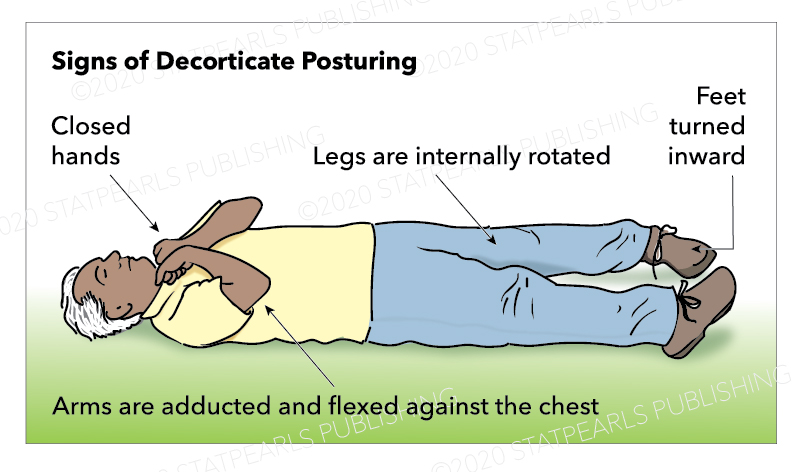[2]
de Sousa I, Woodward S. The Glasgow Coma Scale in adults: doing it right. Emergency nurse : the journal of the RCN Accident and Emergency Nursing Association. 2016 Dec 7:24(8):33-39
[PubMed PMID: 27923300]
[3]
McPherson JG, Chen A, Ellis MD, Yao J, Heckman CJ, Dewald JPA. Progressive recruitment of contralesional cortico-reticulospinal pathways drives motor impairment post stroke. The Journal of physiology. 2018 Apr 1:596(7):1211-1225. doi: 10.1113/JP274968. Epub 2018 Feb 19
[PubMed PMID: 29457651]
[4]
Riddle CN, Edgley SA, Baker SN. Direct and indirect connections with upper limb motoneurons from the primate reticulospinal tract. The Journal of neuroscience : the official journal of the Society for Neuroscience. 2009 Apr 15:29(15):4993-9. doi: 10.1523/JNEUROSCI.3720-08.2009. Epub
[PubMed PMID: 19369568]
[7]
Hannawi Y, Abers MS, Geocadin RG, Mirski MA. Abnormal movements in critical care patients with brain injury: a diagnostic approach. Critical care (London, England). 2016 Mar 14:20():60. doi: 10.1186/s13054-016-1236-2. Epub 2016 Mar 14
[PubMed PMID: 26975183]
[8]
Moon JW, Hyun DK. Chronic Brain-Dead Patients Who Exhibit Lazarus Sign. Korean journal of neurotrauma. 2017 Oct:13(2):153-157. doi: 10.13004/kjnt.2017.13.2.153. Epub 2017 Oct 31
[PubMed PMID: 29201852]
[10]
Emami P, Czorlich P, Fritzsche FS, Westphal M, Rueger JM, Lefering R, Hoffmann M. Impact of Glasgow Coma Scale score and pupil parameters on mortality rate and outcome in pediatric and adult severe traumatic brain injury: a retrospective, multicenter cohort study. Journal of neurosurgery. 2017 Mar:126(3):760-767. doi: 10.3171/2016.1.JNS152385. Epub 2016 Apr 1
[PubMed PMID: 27035177]
Level 2 (mid-level) evidence

